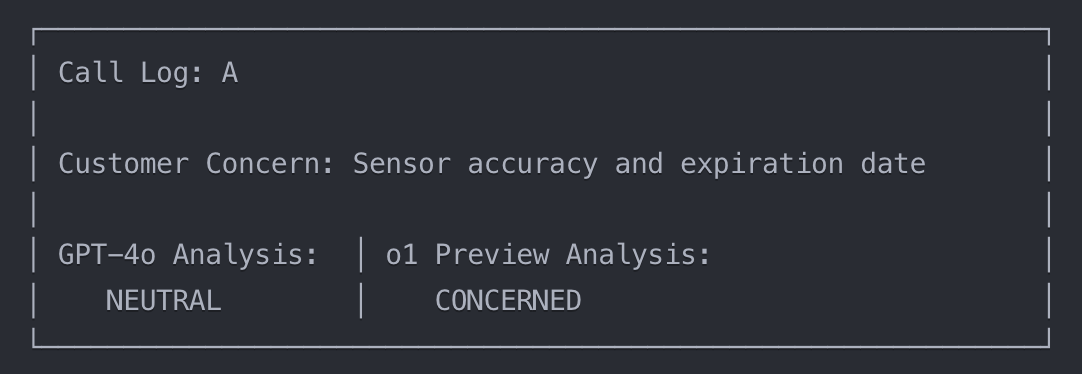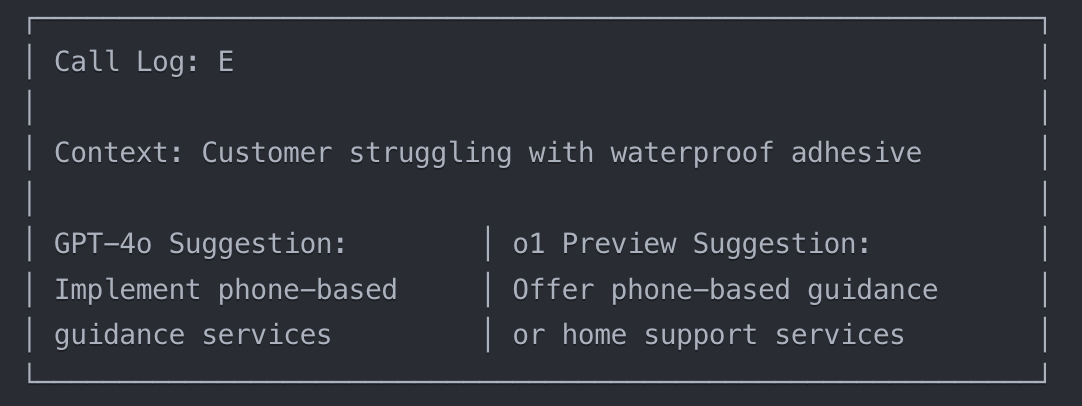
OpenAI has once again pushed the boundaries with its latest innovation: the o1 model. This groundbreaking AI system represents a significant leap forward in artificial intelligence capabilities, particularly in the realms of advanced reasoning. As we delve into the intricacies of o1, we’ll explore its features, performance, and potential applications, with a special focus on how it compares to its predecessor, GPT-4o.
The Dawn of a New AI Era
OpenAI’s o1 model comes in two variants: o1-preview and o1-mini. Built upon a foundation of reinforcement learning, o1 introduces a novel approach to AI processing that emphasizes “thinking before responding.” This methodology allows the model to engage in more complex problem-solving and nuanced analysis, particularly in the fields of science, coding, and mathematics.
The o1 model’s architecture is designed to excel in tasks requiring advanced reasoning. By incorporating a more sophisticated understanding of context and relationships between concepts, o1 can tackle problems that were previously challenging for AI systems. This improvement is particularly evident in its performance across various academic and professional benchmarks.
Pushing the Boundaries: Performance Benchmark
To truly gauge the capabilities of o1, OpenAI subjected the model to a series of rigorous tests across different domains:
- Competitive Programming: o1 demonstrated exceptional performance on Codeforces, a platform renowned for its challenging algorithmic problems.
- Mathematics: The model excelled in the USA Math Olympiad qualifier (AIME) and showed promising results in the International Mathematics Olympiad (IMO) qualifying exam.
- Sciences: o1 tackled complex problems in Physics, Biology, and Chemistry through the General Physics Question Answering (GPQA) benchmark.
These benchmarks highlight o1’s ability to not only process information but to apply logical reasoning and problem-solving skills in highly specialized areas. The model’s performance in these tests suggests a significant advancement in AI’s capacity to handle complex, multi-step problems that require deep understanding and analytical thinking.
o1 vs. GPT-4o: A Comparative Analysis
One of the most intriguing aspects of o1 is how it compares to its predecessor, GPT-4o. To explore this, we conducted a comparative analysis on transcribed customer hotline voice logs with both models, focusing on issues pickup, sentiment detection, and proposing solutions to customer hotline interactions. The results revealed several key differences:

Illustration 1 : Sentiment analysis comparison: GPT-4o labels ‘Sensor accuracy’ concern as NEUTRAL, while o1-preview detects CONCERNED sentiment
Sentiment Analysis: A Leap Forward
- Nuanced Detection: o1-preview demonstrated a more refined ability to detect subtle emotional tones. In several instances where GPT-4o classified sentiments as “Neutral,” o1-preview identified more specific sentiments like “Concerned” and “Frustrated”.
- Enhanced Sensitivity: o1-preview appeared to be more sensitive to negative emotions overall, potentially leading to more accurate and detailed sentiment analysis.
Issue Identification: Unraveling Complex Problems
o1-preview’s nuanced analysis capabilities translate into better issue identification:
- Increased Sensitivity: The model’s ability to detect more subtle emotional states suggests it might be more adept at identifying underlying issues that aren’t immediately apparent.
- Improved Urgency Assessment: o1-preview’s more granular analysis could lead to better assessment of issue urgency, based on its improved detection of customer emotions like frustration or concern.

Solution Generation: Room for Improvement
Interestingly, despite o1-preview’s advanced capabilities, its performance in generating solutions doesn’t demonstrate significant improvements over GPT-4o:
- Broader Knowledge Base: While o1-preview is expected to have a more extensive general knowledge base, this doesn’t necessarily translate into more diverse or innovative solution suggestions.
- Similarity to GPT-4o: The solution suggestions from o1-preview often appear similar in quality and depth to those provided by GPT-4o, sometimes coming across as generic or cliché.
The Strengths and Challenges of o1
Key Strengths
- Complex Problem-Solving: o1’s performance in competitive programming and academic benchmarks demonstrates its advanced analytical capabilities.
- STEM Reasoning: The model excels in science, technology, engineering, and mathematics tasks, making it a powerful tool for research and education in these fields.
- Enhanced Sentiment Analysis: o1 demonstrates improved accuracy in detecting and classifying emotional tones in text, representing a significant advancement in AI’s ability to analyze human communication.
Limitations and Challenges
Despite its advancements, o1 faces some limitations:
- Feature Gaps: Current versions may lack some features present in other models, such as web browsing and file upload capabilities.
- Processing Speed: The model’s complex reasoning approach may result in slower response times for intricate queries.
- Cost Considerations: The advanced capabilities of o1 may come with higher operational costs, potentially impacting its accessibility and widespread adoption.
The Future of AI: Potential Applications
The unique capabilities of o1 open up exciting possibilities across various fields:
- Scientific Research: o1’s advanced reasoning could accelerate breakthroughs in complex scientific problems.
- Software Development: Its proficiency in competitive programming benchmarks suggests potential applications in advanced coding and algorithm development.
- Education: o1 could serve as a powerful tool for tackling complex subjects, particularly in STEM fields.
- Customer Service: The model’s improved sentiment analysis capabilities could enhance customer interaction analysis and response strategies.
Conclusion: A New Chapter in AI Evolution
OpenAI’s o1 model represents a significant leap forward in AI technology, particularly in the realms of advanced reasoning. Its enhanced capabilities in detecting emotional tones and solving complex problems open up new possibilities across various industries, from scientific research to customer service.
While o1 faces challenges in terms of processing speed and cost, its potential to revolutionize how we approach complex problems and analyze human communications is undeniable. As the model continues to evolve, it will undoubtedly play a crucial role in shaping the future of AI applications.
The introduction of o1 marks another milestone in the journey towards more sophisticated and nuanced AI systems. As we continue to explore and refine these technologies, we edge closer to a future where AI can not only process information but also provide more accurate and context-aware analyses in ways that were once thought to be uniquely human. The o1 model is not just a technological advancement; it’s a glimpse into a future where AI becomes an indispensable partner in tackling some of humanity’s most complex challenges.
Contact us at [email protected] to discover how our intelligent technologies can propel your business growth.
We look forward to collaborating with you to shape the future!
Relevant Articles:
AI-Powered Consumer Insights
LLMs Transforming Social Listening & Market Insights
